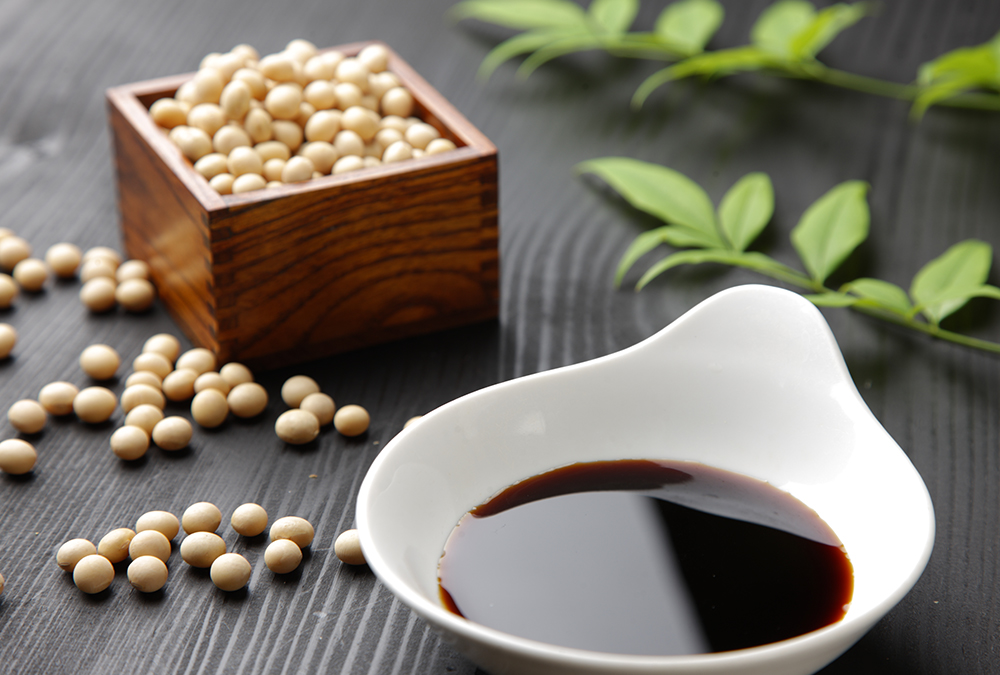Mon - Fri 9.00 - 17.00
Call us +1 (888) 825-9321

Soy sauce: you can hardly think of eating sushi without it. Salty, flavorful, and dark, soy sauce is a staple in kitchens across the world and can be dashed into dishes of all kinds for extra tang and taste. However, if you’re on the low-carb keto diet, you have to stop and reflect on the number of net carbs in this kitchen constant: is soy sauce keto-friendly? We have the scoop here.
The ketogenic diet is an amazing natural metabolism hack that allows people to trigger ketosis, a metabolic state in which the body runs primarily on ketones from fat instead of glucose from sugar. Keto meal plans are designed to lower carb count by ditching foods like bread and rice and prioritizing healthy fats like cold-pressed oils, avocados, nuts, and more. Those new to keto may be surprised to learn that simple sauces and marinades can completely derail this diet.
Store-bought sauces, dips, and condiments are often full of sugars that make them more appealing to the buying public. Even sugar-free salad dressings and marinades still contain refined vegetable oils and other fillers and stabilizers meant to prolong shelf life, and they’re death to natural low-carb diets for weight loss. Let’s find out where soy sauce falls among these store-bought sauces.
First order of business: what is soy sauce and how is it made?
A staple of Asian cuisine easily dashed into veggie stir-frys, soy sauce is a dark brown salty liquid derived from a mixture of fermented soybeans, water, and salt. It has a rich umami flavoring that many people find indispensable when cooking.
Traditionally soy sauce was made over a long, multi-step process whereby the soybeans were first cooked, then cultured, then brined and brewed until fully fermented, then pressed into the unique condiment that is soy sauce.
In modern times, this production happens faster, with less cost and fewer and more targeted ingredients like acid-hydrolyzed vegetable protein. Instead of months it now takes a matter of days to produce a product with a much longer shelf life. Traditionalists say the flavor of this fast method does not match that of the original, but serves the purpose of the average consumer just fine.
Varieties of soy sauce include light and dark versions, low-sodium varieties, and tamari, which is a Japanese recipe that uses soybeans solely and no other grains, making it the most appropriate for those on a gluten-free diet. Light soy sauce is the one most people think of when they think of soy sauce, while dark soy sauce is a thicker version with added caramel or molasses.
Dark soy sauce is not keto, but how does regular soy sauce stack up?

You’ve got a keto recipe that begs for a little more flavor in one hand and a bottle of Kikkoman soy sauce in the other: splash or trash? The answer is: soy sauce may be used while on keto, if you use it sparingly.
Soybeans themselves are largely too high in carbs for a keto diet, with 1 cup containing 56 grams of total carbs. Soy sauce, while a soy product, is nevertheless a different substance with only 1 gram of net carbs per tablespoon.
That’s not a lot of wiggle room if you want to season a whole dish like a Shrimp Chow Mein one-pot meal. Plus, besides the carb content, soy sauce also contains phytoestrogens that mimic estrogen in the body and may disrupt your hormonal balance (the salt content isn’t exactly good for your blood pressure either). Luckily there is a soy sauce alternative.
The high-fat, low-carb keto diet makes room for sauces and dips; you just have to find the right product, or make your own DIY sauces using olive, MCT, or coconut oil as a base. Here’s a quick rundown on the options you have to replace sauces for keto meals, including a soy sauce alternative.
Lose the carbs and sugars often found in thick sauces and easily make them yourself.
The key to making keto salad dressing is what you don’t put in there: no added sugars, just the simple ingredients you want for flavor and texture.
For your schmears and dips, there are keto versions of classic favorites.
If you’re going to marinade or sauté meat or veggies, there are keto versions of these substances too, including soy sauce.
If soy sauce isn’t keto enough for you, there is an alternative out there that you can customize for your own uses. The same is true for many sauces, condiments, marinades, dips, and dressings: the flavors you want can be had in cleaner concoctions if you’re willing to take the recipe into your own hands. Just as there are keto sushi alternatives, the same is true for soy sauce.
I really want to thank you for yet another great informative post, I’m a loyal reader to this blog and I can’t tell you how much valuable tips I’ve learned from reading your content. I really appreciate all the effort you put into this great blog.
You’re welcome! Thanks for reading our blog!
I’ve heard that coconut aminos Is a substitue for soy sauce. Is that keto?
Hi John! Yes, the coconut aminos is a common Keto seasoning.
Adding sesame oil, ginger and onion powder can be added to Coconut Aminos? Or keep those ingredients separate to create a soy sauce. I love sushi, I’m looking for a tasty soy substitute
Thanks for the tips, Sandra!